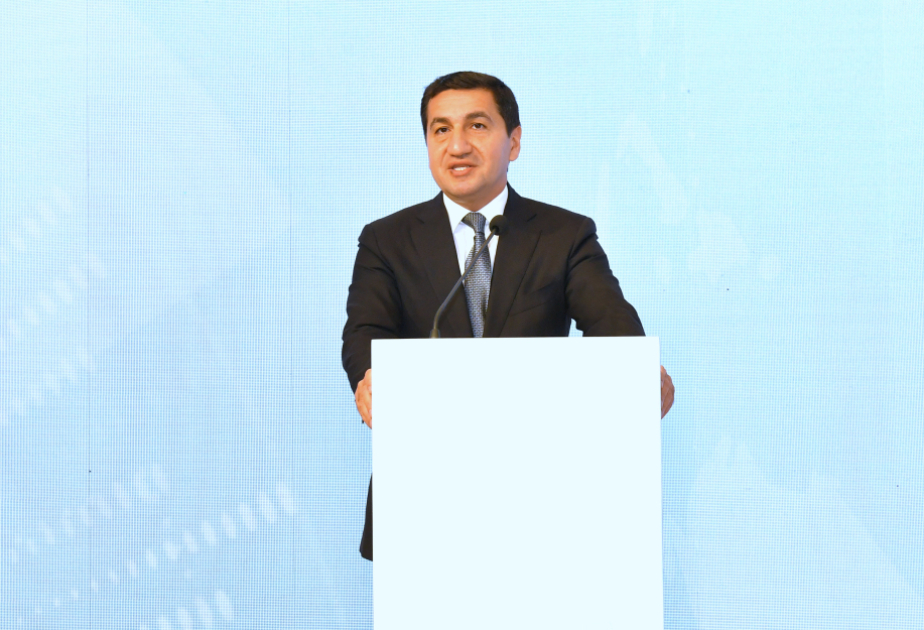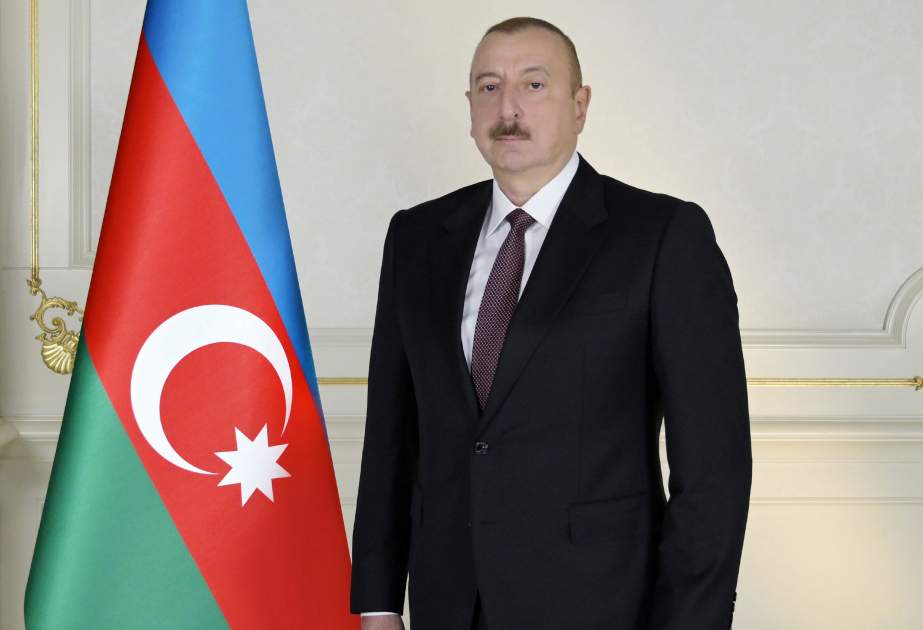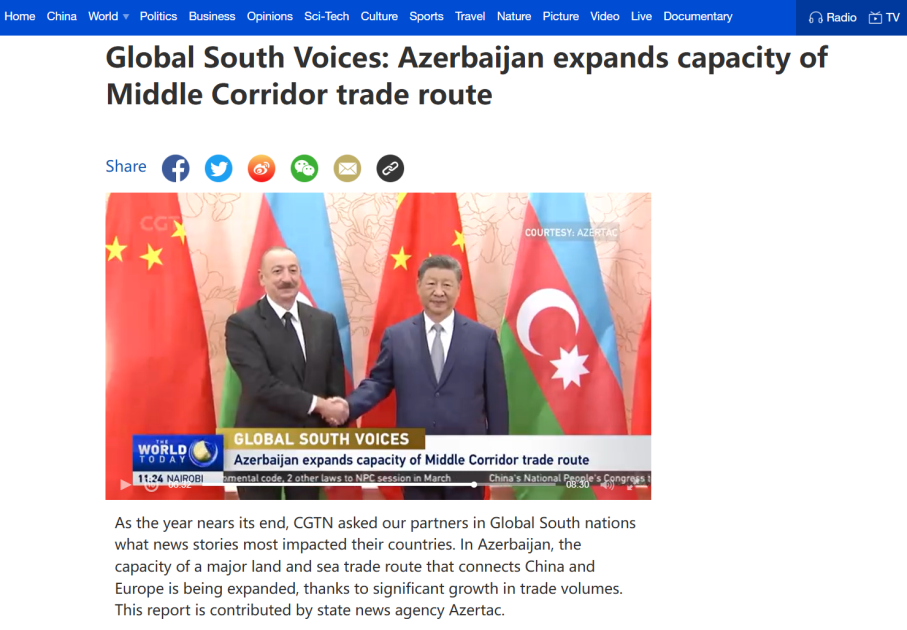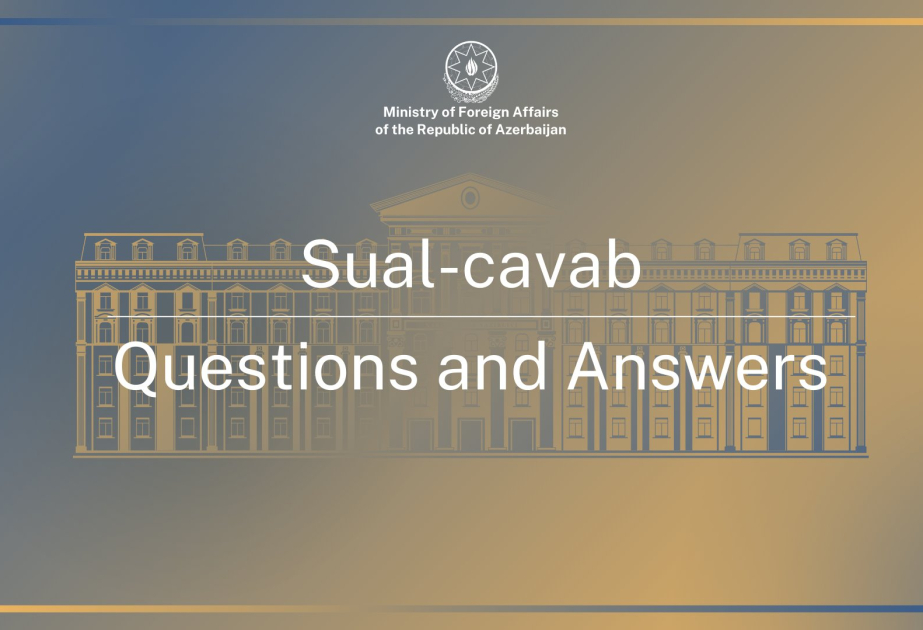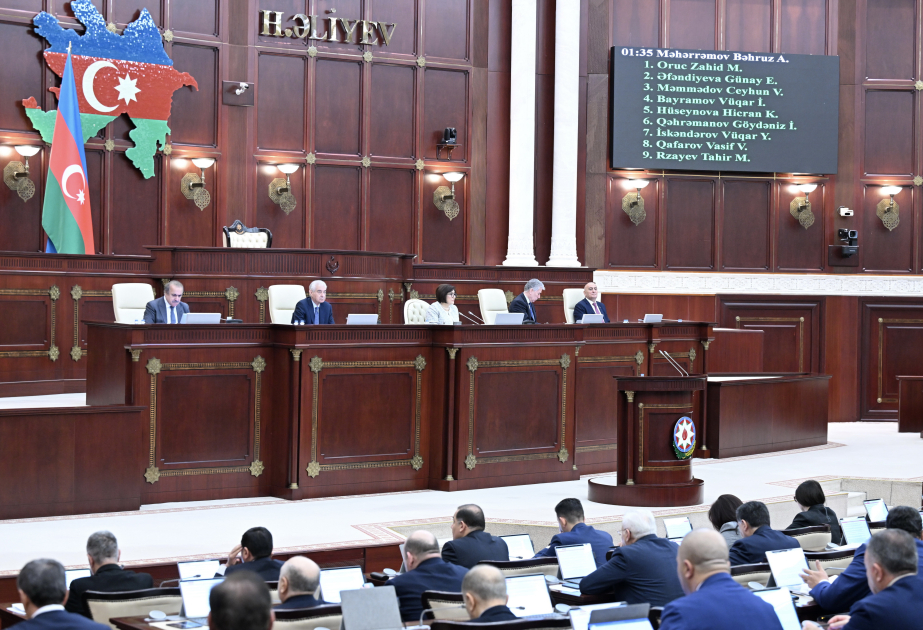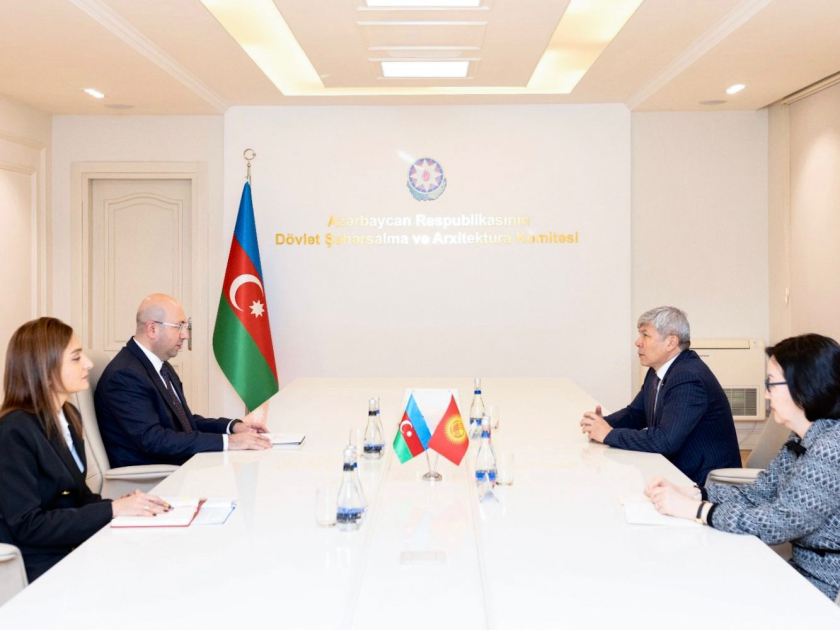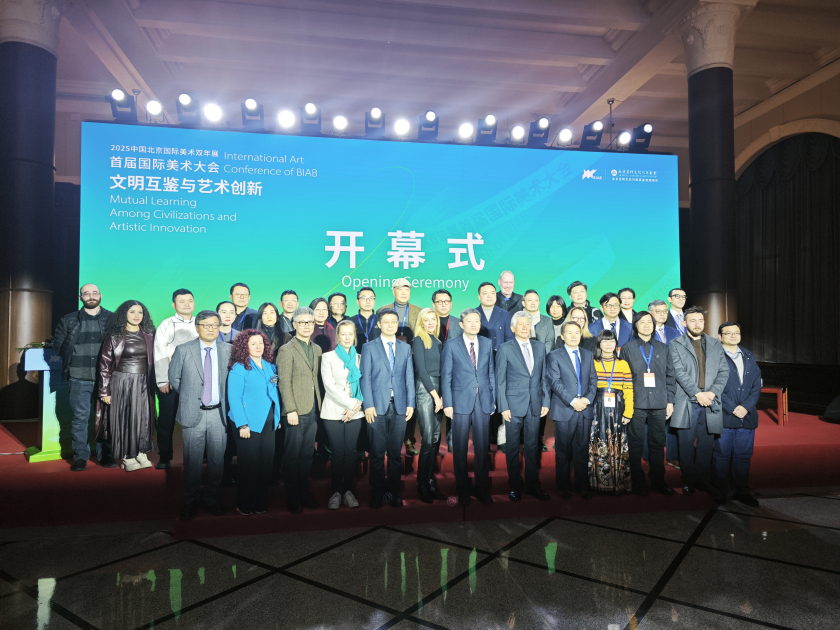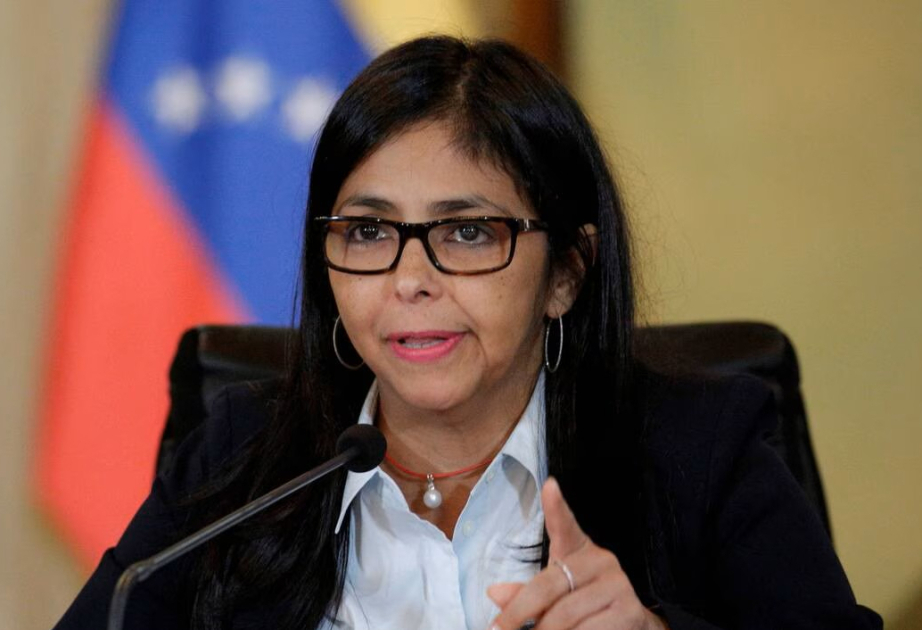Part III
Regional integration: as a basic factor of the new security system
In the previous two articles published on the new security architecture, the main thesis was to show that the process of formation of the global security system has already become irreversible. In that context, we have emphasized the importance of regional geopolitical, political, economic, cultural, energy, transportation, logistics, information, ecology and other spheres of integration processes and the important conditions of being a regional geopolitical player in the architecture of security.
Finally, by conducting such a study, we would like to reiterate that our main goal is to determine the characteristic parameters of Azerbaijan as a regional geopolitical player and to analyze the role played by our country in the creation of the global security architecture. This analysis is carried out in the "common cognitive intersection" of philosophy and political science. The analysis is based on an approach to regional and global spaces as a self-organizing complex system. This is also called synergetic approach in science.
By making emphatic notes, we are neither making the subject crazy nor over-scientific. The essence of the issue is that the concept of "security architecture" is conceived in modern research approaches as a phenomenon with complex content and multifaceted function, and at the same time, it is related to complex structures such as "regional integration", "interregional integration" and "global integration". and is related to content terms.
This aspect of the issue was felt in itself from the setting of the topic in the II article. Now we will try to investigate the place and role of regional, inter-regional and global integration processes in the creation of a new world security architecture at a somewhat concrete level in connection with Azerbaijan's ability to become a geopolitical player.
First of all, let's emphasize that regional integration is not a formal concept for a new security architecture, both in the real process and in its political-theoretical aspects. We are talking about a new quality change for security on a global scale. That is, what the term "regional integration" means objectively, and at the same time, the philosophical-political understanding of this new role is equally important. Because currently, the speed and rhythm of changes of various nature processes worldwide require a flexible philosophical and political understanding of what is happening in practice.
So what is "regional integration" in terms of the geopolitical and political meaning of security architecture?
Regional integration: forms and main features
a) Forms
In order to adequately understand the role and place of regional processes in the new security architecture, we will look at those processes through the prism of the "new regionalism theory" that we highlighted in the previous article.
O.V. Butorina in his scientific article dedicated to this issue emphasizes that we can say that regional integration as a process occurred after the Second World War. Of course, at different stages of history, among the states located in the same region, along with other processes, events of an integration nature also took place. However, here the author points to the diversity of the processes of unification within the regions in the sense we currently accept, and states that they have begun to have a serious impact on the formation of the security system.
Indeed, since the middle of the last century, they began to give more priority to the tendency of integration within the regions as an important condition for world-wide security and civilized relations between states. From this point of view, it is not a common event that the foundation of the formation of the European Union coincided with that period. Different types and stages of integration can be mentioned here.
In Europe alone, as a region, in 1950–1959, 4 forms of integration of different levels emerged (European Customs Union, European Coal and Steel Community, European Economic Community and European Free Trade Association). Similar regional integration processes took place in countries of the socialist camp, Africa, Asia and Latin America, with different content and goals.
For example, organizations such as ASEAN and EKOBAC appeared in the 1960s and 1970s. In the 1980s and 1990s, NAFTA (North America), Mercosur (South America), CIS (post-Soviet space) and several other integrative institutions were created. With the arrival of the 21st century, the stages of expansion of the European Union have a special place among the processes affecting geopolitical dynamics at the international level. This organization was expanded in 1973, 1981, 1986, 1995, 2004, 2007, 2013. Currently, 10 states are expected to integrate into the EU by 2030.
Therefore, in Europe, as the most developed region of the world, regional integration has already become one of the main methods of forming relations. And this is not the only region. Similar processes are evident in almost all regions of the world. For example, a report prepared by the Moscow State Institute of International Relations emphasizes that between 2000 and 2008, about 250 agreements were signed in the field of regional trade.
The report also touches on issues such as types of regional integration (economic, political, geopolitical, etc.), functions, and goals. It is clear that there are quite a few forms of regional integration around the world. They operate on every continent. For example, the number of forms of economic-commercial integration is 3 in Europe, 9 in Asia, 6 in America, and 13 in Africa. In fact, this number is from several years ago and varies.
But the main thing in terms of security architecture is not the number, but the ratio between the form of integration and the efficiency! Let's say that the form of regional integration in Africa is greater than in other continents, but this does not mean that the continent is more developed and a safer place. On the contrary, Africa, which has many forms of regional integration, appears to be more vulnerable to chaos and illegal activities in terms of security. Therefore, to determine the real role of regional integration in the formation of the security architecture, it is necessary to take into account a large number of parameters. According to the general opinion of experts, in addition to concrete cooperation mechanisms in regional integration, ensuring the functional efficiency of the organization and its strategic goal play a serious role. From this point of view, determining the signs of integration is of theoretical and practical importance.
b) Signs
First, interstate relations in regional integration should enter a qualitatively new stage. Figuratively speaking, the complex or sum of these relations should be more effective than the sum of the individual relations included in it (this is also called "synergetic effect" in relations).
Secondly, integration into the region should "separate" the states included in it from the surrounding world in a certain sense. This is also called "operational closure" in complex systems. It is not isolation, on the contrary, it is an indicator of sincerity and determination in joint action of the states in integration.
Third, regional integration should be based on the principles of voluntarism and partnership. It should be accepted by each member that the main goal here is mutually beneficial cooperation!
Fourth, integration can spread to various spheres of domestic and foreign policies of participating member states. In this quality, regional integration differs from international organizations.
Finally, the last sign is of a strategic nature and indicates the readiness of the participants of regional integration to share the future historical destiny. One of the best expressions of this principle belongs to R. Schuman, one of the founders of the European Union. He wrote that "... we have a common destiny. The success or failure of a neighbor affects each of us... Every European country must instinctively feel that it is part of a common connection and interdependence."
Each of the highlighted forms and signs of regional integration has importance in building the regional security system at the current stage. Based on this, the substantive and functional role of a specific region in the global security architecture can be determined.
For that purpose, on the basis of the forms and signs of integration that are characteristic of all regions, we can analyze the manifestation of this phenomenon in the South Caucasus in two ways - firstly, the philosophical and political-theoretical peculiarities of the forms of integration in the region, and secondly, the participation of Azerbaijan in the forms of regional integration in the context of the formation of a new model of regional security. and analysis of its role in the aspect of global security architecture. It would be useful to look at the synthesis of these two aspects in the light of existing forms of regional integration in the South Caucasus.
(to be continued)
Fuzuli GURBANOV,
XQ analyst, doctor of philosophy



